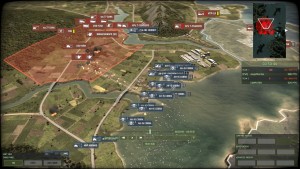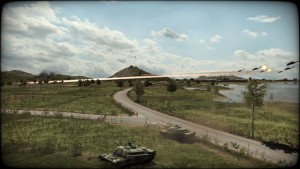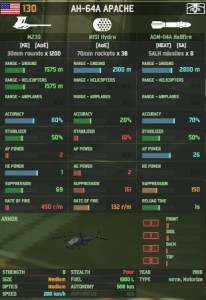Wargame: Red Dragon Analysis
Wargame: Red Dragon is a real-time strategy game by Eugen Systems, which focuses on potential military conflicts in the 1980s, featuring military units with details reproduced from actual sources.
The Game launch trailer: https://www.youtube.com/watch?v=lw3az0LsKc0
Analysis After Playing:
The Elemental Tetrad
The game prides itself on historical accuracy, realistic physics and its IRISZOOM engine, which allows players to zoom in from a satellite view of the entire battlefield, down to ground level to observe individual unit combat. The in-game camera is able to pan, zoom and rotate with very high flexibility, which theoretically enables players to reproduce the gameplay footage in the trailer. The aesthetics and mechanics were extremely well-tied together. All units were given symbols that signified their general role, such as MANPADS, armour and the like. In fact, the player can choose to use NATO’s universal unit type symbols, or the generic RTS ones if they are unfamiliar with military symbols. The story only exists in the campaign, and players usually play skirmish modes or online against one another. The technology behind the AI is less impressive however. Setting the enemy to a higher difficulty does not make them smarter; it only lets them cheat by earning more resources and calling more units.
Lens of Pleasure
As I play Red Dragon, I control the military units of the major powers of the world, pitting against other powers of my own choosing. I can choose to view the battlefield in the typical fashion:
Or more unconventionally, the exact same scene close-up (see the F/A 18C Hornet firing missiles in the background!):
The technology to zoom in seamlessly is not groundbreaking in any sense, but its implementation was coupled with very beautiful graphics, which made it a pleasure to view the combat up close.
Lens of Economy
Every player in the game begins with a set number of points, with which military units can be purchased. Throughout the game, players earn points by maintaining control of key sectors in the map, which provide continuous revenue for the purchase of additional reinforcements. In order to keep things less complicated, the currency is universal, meaning that these points can purchase any kind of unit, as long there is enough of it.
Lens of Problem Solving
The game has an extremely steep learning curve, with over a thousand units to use across the various featured nations, with a lot of detail. For example, the infamous AH-64A Apache helicopter:
I noticed my playstyle tends to lean towards the use of heavy armor and infantry to take control of the map. I dislike sending small sorties against the enemy because of the potential for losses; instead I prefer to scout with inexpensive units and then push forward with overwhelming force.
Lens of Skill
As a direct follow-up from the previous lens, the complexity of the game can make it difficult to decide what units are useful in battle. However, when I managed to learn the usage of these units in battle, it was very satisfying. Furthermore, the game allows you to watch replays of your prior battles (as well as those of other people), so that mistakes can be spotted and corrected in future games.
Analysis After Watching a Friend Playing:
Lens of Pleasure
I noted he was pleasantly surprised that the units all were voiced according to their language and nationality, instead of using heavily-accented English for all units. However, he did comment that this made playing non-English nationalities harder as he was unable to decipher what his units were saying.
Lens of Economy
Being new to the game, but not to the genre, he played frugally, keeping an eye on the points he had. I noticed that he tended to purchase more expensive but powerful units. When asked, he said he was not fond of managing large numbers of weak units.
Lens of Problem Solving
He complained about the large number of choices for units, but after playing a while with the basic choices, he became more able. He chose to use aerial-based tactics such as using napalm bombers to overwhelm infantry entrenched in urban areas, and sending assault helicopters to harass enemy ground forces.
Lens of Skill
He commented that the game does not overly encourage what is known as micro-management; overall strategy is emphasized.
Combined Analysis:
It turns out that people derive different kinds of trivial pleasure from the same game. For example, my friend was impressed and liked the voice acting. In hindsight, I think that it was fairly well-done too. Furthermore, in real-time strategy games, every player has different ways of designing their strategies. I dislike scattering my forces piecemeal, but admit that is primarily due to my incompetence in managing many things at once. As an experienced player in other real-time strategy games, my friend was skilled in manipulating the aircraft and helicopters, and rarely lost any, despite them being unarmoured. In this sense, we solved the same problem in different ways.



